Top 5 Powerful UX Design Trends To Incorporate In 2025

Oguzhan B.
Project Manager @Behoove
January 31, 2025
/
8 MIN READ

Text
The world of UI/UX design is constantly evolving in response to user expectations and technological advances. As we have just entered 2025, it is more important than ever to keep up with these changes for brands that want to maintain their competitive advantage. Changes in user behavior are bringing to the fore trends such as artificial intelligence-powered personalization, sustainable design and minimalism. So why are these new UI/UX approaches critical for businesses? Get ready to discover the most influential design trends of 2025!
Why UI/UX Design Trends Matter in 2025
In the rapidly evolving digital landscape, staying abreast of UI/UX design trends is crucial for businesses aiming to maintain a competitive edge. As we look towards 2025, understanding these trends becomes even more vital.
How Evolving User Behavior Shapes UX Design Trends
User behavior is constantly evolving, influenced by technological advancements and changing expectations, which significantly shape UX design trends in 2025. With the widespread use of smartphones, mobile-first and responsive web design have become essential. Users demand fast-loading, efficient interfaces, making speed a top priority. Personalization is key, as people expect experiences tailored to their preferences, driving the integration of AI for dynamic content. Privacy concerns are more prominent, necessitating secure and transparent data practices. Additionally, the rise of voice and gesture technologies requires UX designs to accommodate new interaction modes. Finally, there's a strong emphasis on inclusivity, ensuring digital products are accessible to everyone. Adapting to these shifts is crucial for creating engaging and competitive digital experiences.
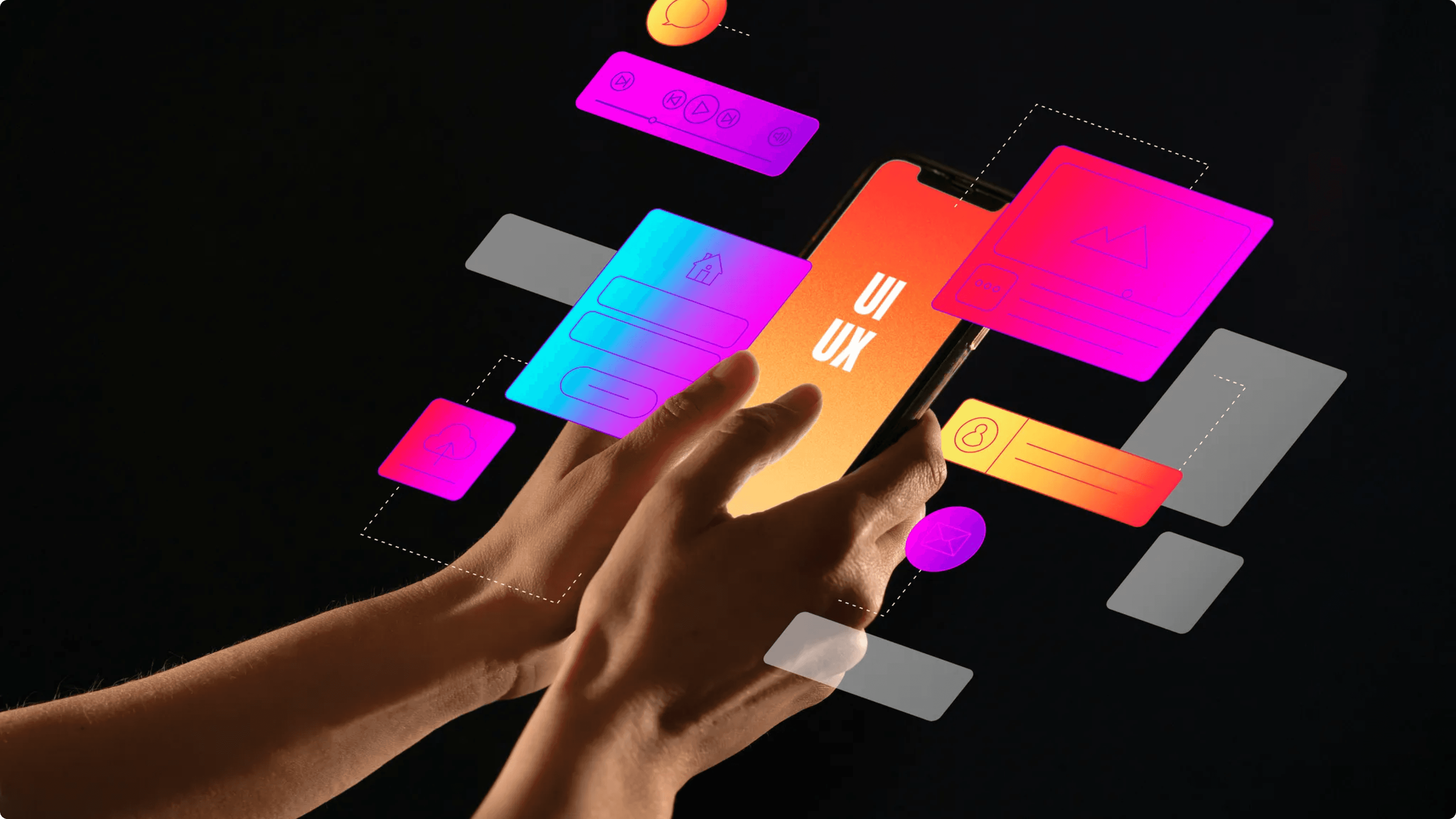
Staying Competitive with the Latest UX Innovations
To stay competitive, businesses need to embrace the latest UX innovations, such as AI personalization and responsive design. By keeping up with emerging technologies and fostering a culture of innovation, companies can enhance user engagement and satisfaction. This proactive approach helps attract new customers and strengthens brand loyalty, ensuring a strong market position.
Hidden Risks of Falling Behind in UX Trends
Falling behind in UX trends can pose significant risks to businesses, potentially leading to a loss of market share and diminished brand reputation. One notable example is Nokia, which once dominated the mobile phone market but failed to adapt to the smartphone revolution and modern UX design practices. As competitors like Apple and Samsung introduced more user-friendly interfaces and innovative features, Nokia's market share plummeted. Similarly, MySpace, an early leader in social networking, lost its user base to Facebook due to its inability to evolve its design and user experience to meet changing user expectations. These examples highlight the critical importance of staying current with UX trends. Outdated design practices can result in frustrated users, increased bounce rates, and ultimately, a decline in customer loyalty. Businesses that neglect UX innovation risk becoming obsolete in a competitive market where user experience is a key differentiator.
Proven Benefits of Leading in UX Trends
Leading in UX trends offers several tangible benefits that can significantly impact a business's success. One of the primary advantages is increased user retention. By providing a seamless and engaging user experience, businesses can keep users coming back, reducing the bounce rate and fostering long-term relationships. Additionally, staying at the forefront of UX design enhances brand loyalty. When users consistently encounter intuitive and personalized interactions, they develop a stronger connection to the brand, increasing their likelihood of choosing it over competitors. Moreover, being a leader in UX trends can boost a company's reputation as an innovator, attracting new customers who are eager to engage with cutting-edge experiences. This not only drives growth but also solidifies the brand's position in the market as a forward-thinking and user-centric entity.

Trend #1: Personalization Through AI
In 2025, personalization through AI is at the forefront of UX design, transforming how users interact with digital platforms. By leveraging AI, businesses can create highly customized experiences that cater to individual user preferences and behaviors, enhancing engagement and satisfaction.
Want to see how personalization can improve your conversion rates? Check out our Ultimate Design Subscription Guide to Increase Your Conversions.
Essential Elements of Personalization in UX
Effective personalization in UX involves several key elements that work together to create a seamless user experience. These elements include dynamic interfaces and predictive design features, both of which are crucial for meeting user expectations in a personalized manner.
Dynamic Interfaces Tailored to User Needs
AI-driven personalization allows for the creation of dynamic interfaces that adapt to individual user preferences and behaviors. This customization enhances user satisfaction by providing relevant content and features.
Predictive Design Features for Enhanced Engagement
Predictive design leverages AI to anticipate user needs, offering suggestions and features that streamline the user journey. This proactive approach can significantly boost engagement and retention.
Why Personalization Dominates UX Design in 2025
Personalization dominates UX design in 2025 because it aligns with the growing demand for tailored user experiences. As users increasingly seek interactions that reflect their unique preferences, businesses that prioritize personalization can build stronger connections and foster greater loyalty.
Strengthening User Connections with Customized Journeys
Personalization fosters deeper connections by making users feel understood and valued. Customized journeys cater to individual preferences, enhancing the overall user experience.
Increasing Retention Through Predictive Interactions
Predictive interactions not only improve user satisfaction but also increase retention rates. By anticipating user needs, businesses can provide timely solutions, reducing friction and encouraging continued use.

Trend #2: Sustainable UX Design for a Greener Future
Sustainable UX design is becoming a critical focus as businesses and users alike prioritize environmental responsibility. By integrating sustainable practices into UX design, companies can reduce their digital carbon footprint and appeal to eco-conscious consumers.
One way to reduce digital waste is through website maintenance and performance optimization, ensuring that sites run efficiently without unnecessary resource consumption.
Key Principles Driving Sustainability in UX
UX sustainability is driven by principles that emphasize energy efficiency and resource conservation. These principles guide designers in creating digital experiences that are not only environmentally friendly but also user-centric and efficient.
Designing Energy-Conscious Digital Experiences
Sustainable UX design focuses on creating energy-efficient digital experiences. This involves optimizing website performance to reduce energy consumption, which is increasingly important as users become more eco-conscious.
Embracing Minimalism to Minimize Resource Use
Minimalist design reduces resource use by eliminating unnecessary elements. This approach not only supports sustainability but also enhances user focus and navigation.
The Strategic Advantage of Sustainable UX
Adopting sustainable UX practices offers strategic advantages, such as attracting eco-aware audiences and aligning with corporate sustainability goals. This approach not only enhances brand reputation but also demonstrates a commitment to environmental stewardship.
Engaging Eco-Aware Audiences Effectively
Sustainable UX design appeals to eco-aware audiences, who are more likely to support brands that align with their values. By prioritizing sustainability, businesses can attract and retain these users.
Aligning Design Practices with Corporate Sustainability Goals
Incorporating sustainable practices into UX design aligns with broader corporate sustainability goals, enhancing brand reputation and demonstrating a commitment to environmental responsibility.
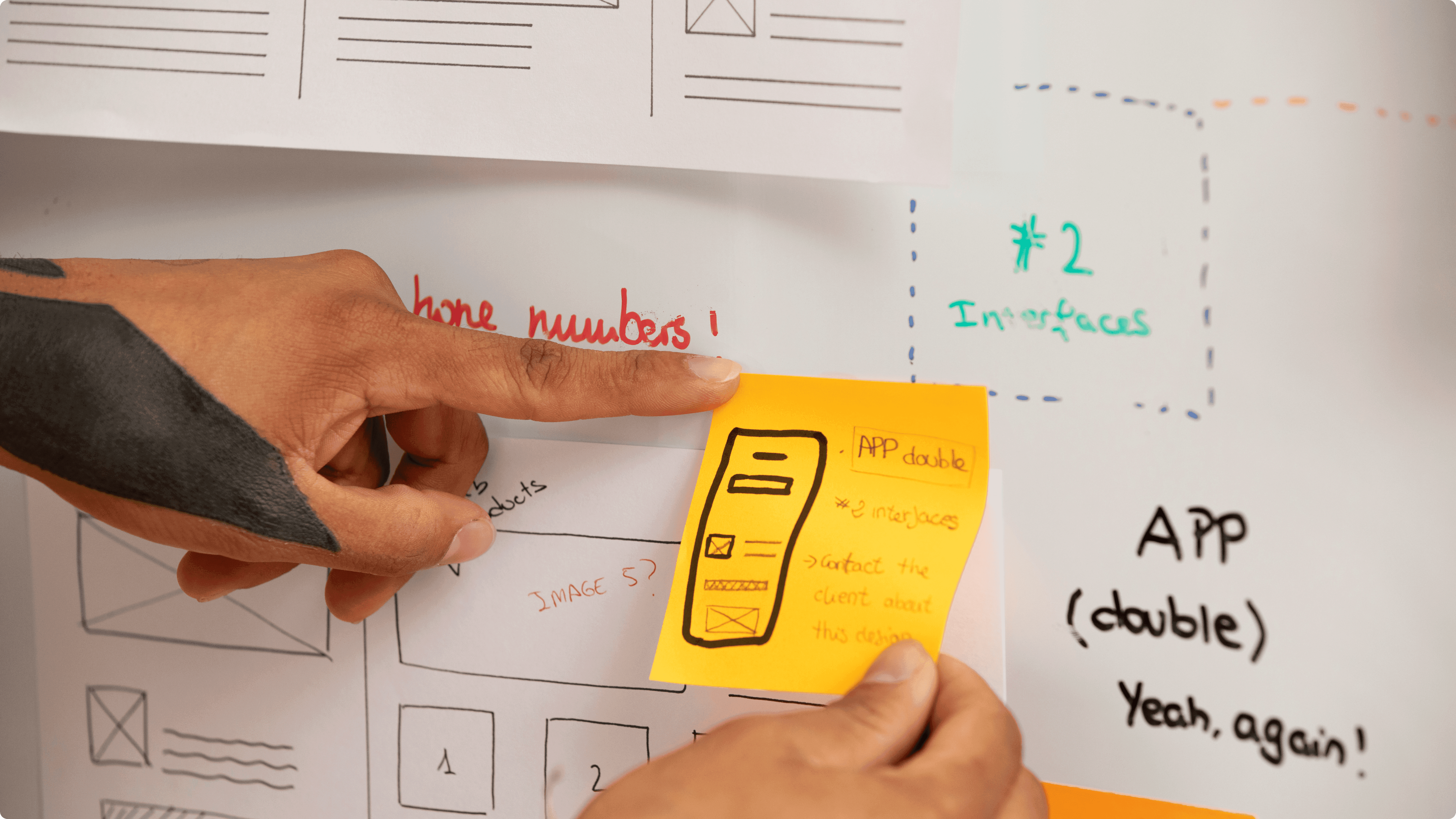
Trend #3: Next-Level Micro-Interactions for Enhanced Usability
Micro-interactions are small, subtle design elements that significantly enhance usability by providing feedback and guiding user behavior. In 2025, these interactions are more sophisticated, offering real-time responses that improve the overall user experience.
For businesses looking to integrate micro-interactions into their platforms, Framer-based no-code development provides an excellent way to create seamless and interactive digital experiences without the need for complex coding.
Redefining UX with Micro-Interaction Features
Micro-interactions redefine UX by adding layers of interactivity that make interfaces more intuitive and engaging. These features help users navigate digital environments with ease, enhancing satisfaction and usability.
Subtle Animations to Guide User Behavior
Micro-interactions, such as subtle animations, guide user behavior by providing visual cues. These small design elements can significantly enhance usability by making interfaces more intuitive.
Real-Time Feedback for Intuitive Interfaces
Real-time feedback, such as loading indicators or confirmation messages, improves user experience by providing immediate responses to user actions, reducing uncertainty and enhancing satisfaction.
How to Use Micro-Interactions Wisely
To maximize the benefits of micro-interactions, designers must use them judiciously. Prioritizing clarity and simplicity ensures that these elements enhance rather than overwhelm the user experience.
Prioritizing User Clarity with Simpler Animations
While micro-interactions can enhance usability, it's important to prioritize clarity. Simple, purposeful animations are more effective than complex ones, which can overwhelm users.
Avoiding Overuse to Prevent Cognitive Overload
Overusing micro-interactions can lead to cognitive overload, detracting from the user experience. Designers should use them sparingly to maintain a balance between engagement and simplicity.
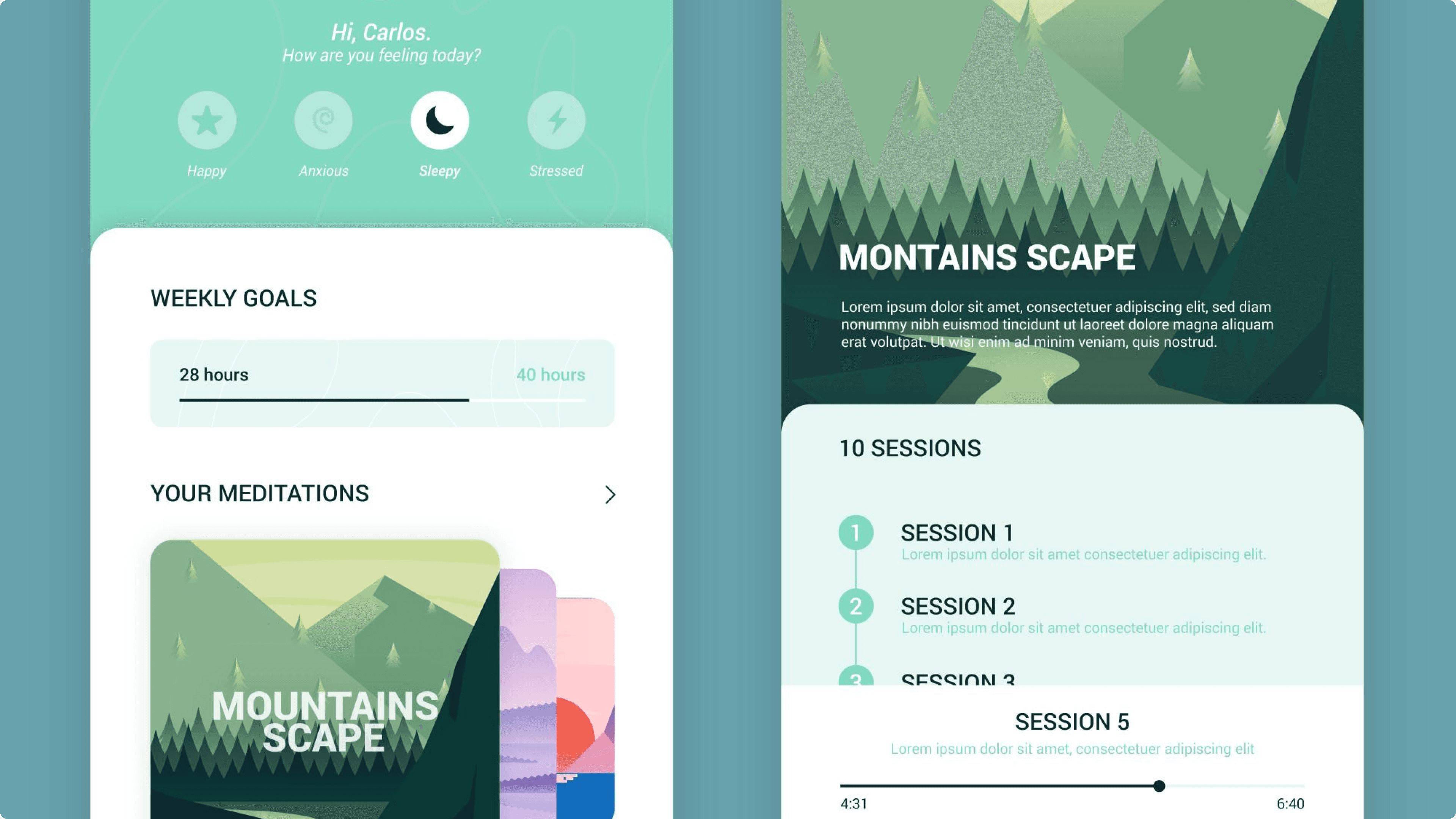
Trend #4: The Rise of Minimalism in UI Design
Minimalism continues to be a powerful trend in UI design, emphasizing simplicity and clarity. By focusing on essential elements, minimalist design improves user focus and facilitates effortless navigation.
Want to see some of the best minimal UI designs? Check out our Best Website Design Trends in the Last Quarter of 2024 for inspiration.
Core Reasons Minimalism Remains Relevant in 2025
Minimalism remains relevant because it addresses the need for clean, distraction-free interfaces that enhance user engagement. This design approach simplifies user journeys, making digital interactions more efficient and enjoyable.
Improving Focus with Clean Layouts
Minimalist design improves focus by eliminating distractions. Clean layouts help users concentrate on essential content, enhancing comprehension and engagement.
Reducing Complexity for Effortless Navigation
By reducing complexity, minimalist design facilitates effortless navigation. Users can easily find what they need, leading to a more satisfying experience.
Inspirational Examples of Minimalist UX Success
Successful minimalist designs demonstrate how simplicity can lead to elegance and functionality. By stripping away unnecessary elements, these designs create seamless user experiences that are both aesthetically pleasing and highly effective.
Achieving Elegance Through Simplicity
Successful minimalist designs achieve elegance through simplicity, creating aesthetically pleasing interfaces that are both functional and beautiful.
Crafting Seamless User Journeys with Minimal Features
Minimalist UX design crafts seamless user journeys by focusing on essential features. This approach ensures that users can complete tasks efficiently, enhancing overall satisfaction.
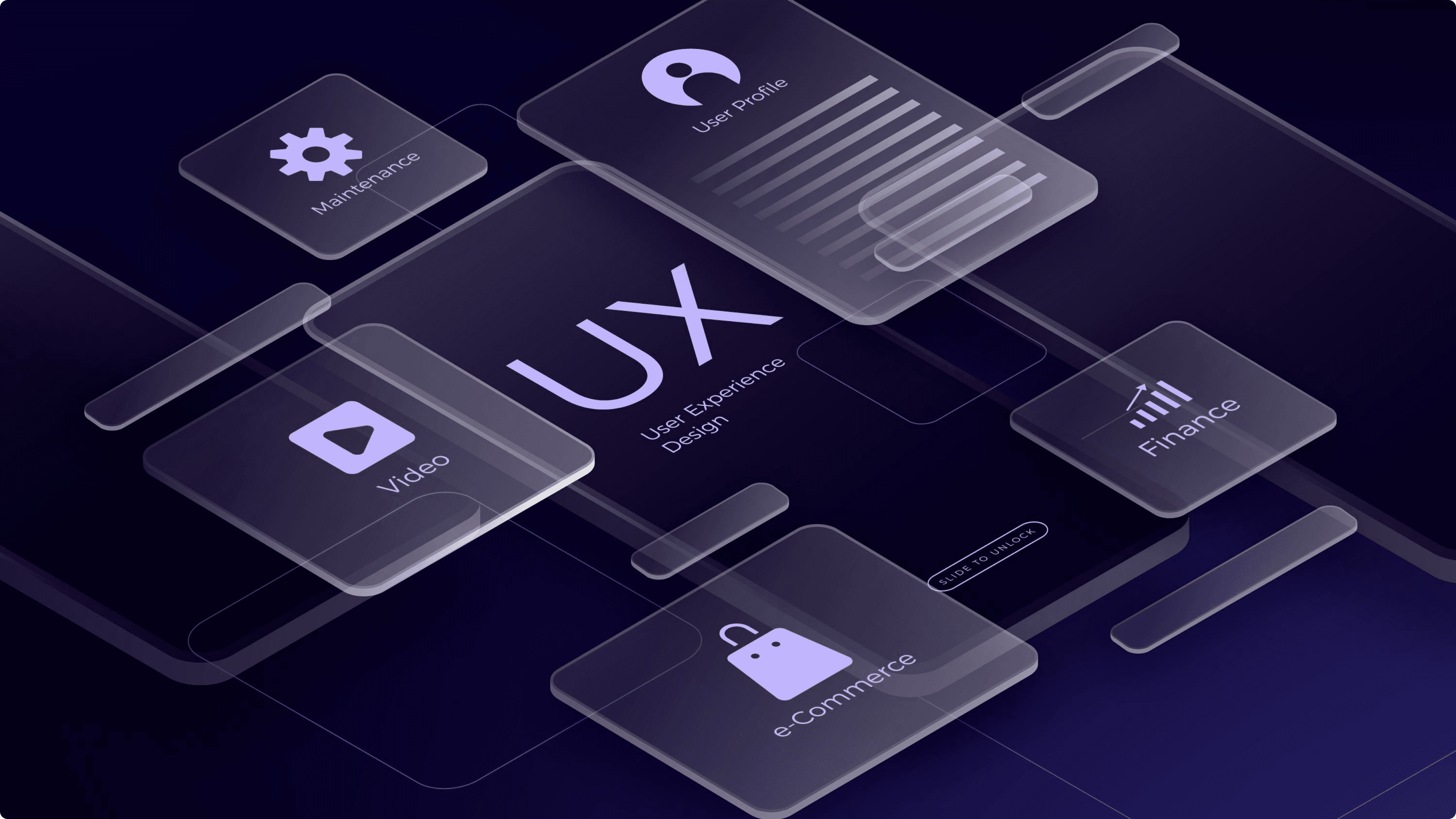
Trend #5: Creating Inclusive and Accessible UX Designs
Inclusive and accessible UX design is essential for ensuring that digital experiences are available to all users, regardless of ability. By prioritizing inclusivity, businesses can reach a wider audience and demonstrate social responsibility.
Businesses looking to enhance accessibility should consider copywriting and content strategy tailored for all users to ensure clarity and engagement for diverse audiences.
Building a Foundation for Inclusivity
Building an inclusive UX foundation involves designing for diverse needs and meeting global accessibility standards. This approach ensures that all users can access and benefit from digital content and services.
Designing for Users of All Abilities
Inclusive design ensures that digital experiences are accessible to users of all abilities. This involves considering diverse needs and creating interfaces that are usable by everyone.
Meeting Global Accessibility Standards
Meeting global accessibility standards, such as the Web Content Accessibility Guidelines (WCAG), is crucial for creating inclusive designs. These standards provide a framework for ensuring accessibility across digital platforms. For example, the WCAG guidelines recommend providing text alternatives for non-text content, such as images and videos, to ensure that users with visual impairments can access the information through screen readers. Another example is ensuring that all interactive elements, like buttons and forms, are navigable via keyboard, which is essential for users with mobility impairments who may not be able to use a mouse. By adhering to these standards, businesses can create digital experiences that are accessible to a wider audience, enhancing usability and compliance.
Practical Steps for Accessible UX Implementation
Implementing accessible UX involves practical steps such as using alt text, ensuring keyboard-friendly navigation, and adopting high-contrast color schemes. These measures enhance usability for users with disabilities, creating a more inclusive digital environment.
Using Alt Text and Descriptive Media
Alt text and descriptive media enhance accessibility by providing context for users with visual impairments. These elements ensure that all users can access and understand content.
Ensuring Navigation is Keyboard-Friendly
Keyboard-friendly navigation is essential for users with mobility impairments. Ensuring that all interactive elements are accessible via keyboard enhances usability for these users. For instance, every input element in a form should seamlessly switch to the next one when the user presses the Tab key. This functionality allows users who rely on keyboards for navigation to move through forms efficiently without needing a mouse. By implementing such features, designers can create more inclusive digital experiences that accommodate a broader range of user needs.
Implementing High-Contrast Color Schemes
High-contrast color schemes improve readability for users with visual impairments. By enhancing text visibility, these schemes contribute to a more accessible user experience.
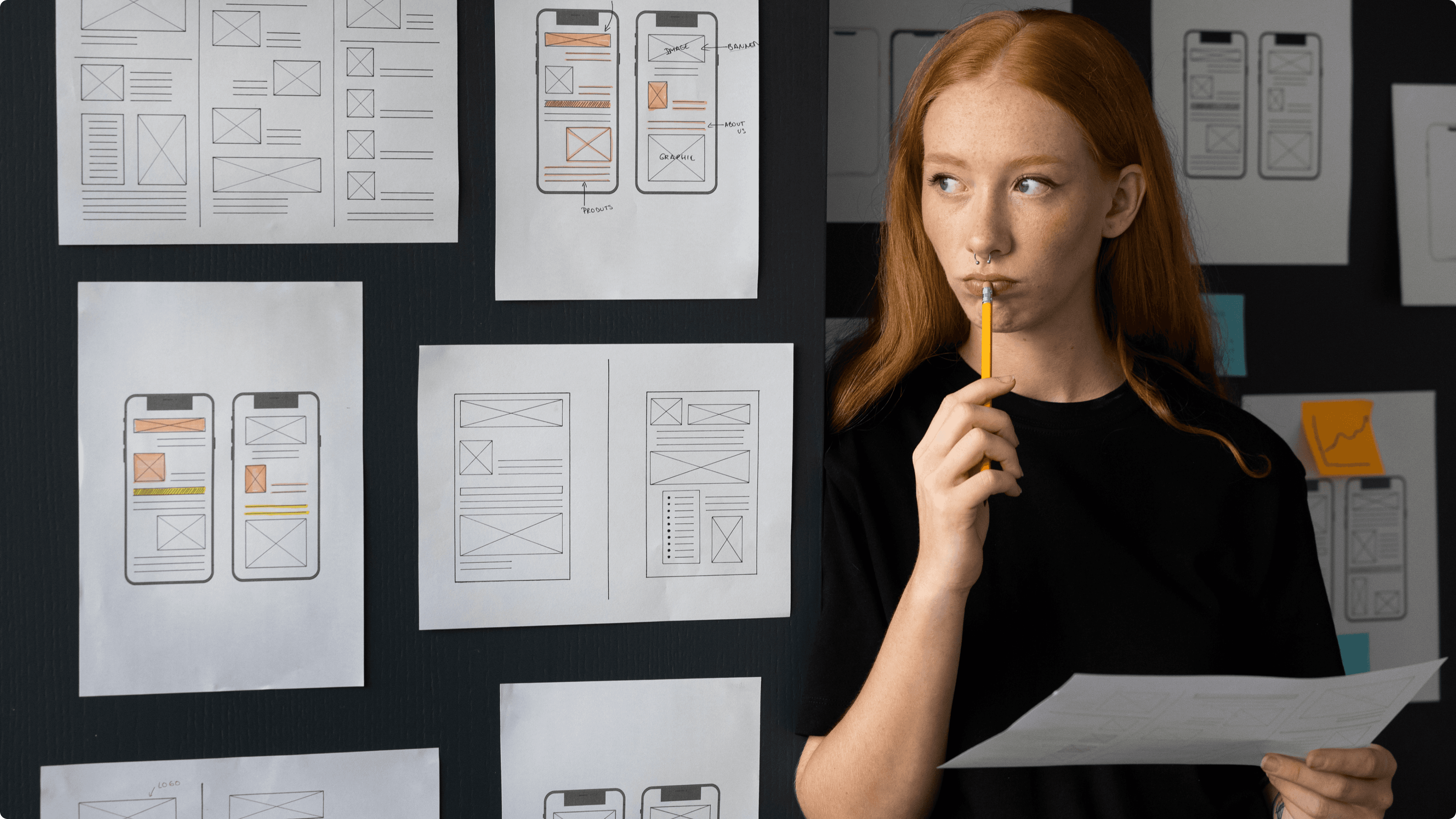
Elevate Your UI/UX Strategy with Behoove
To stay ahead in the ever-evolving world of UI/UX design, consider partnering with Behoove Studio. Our team of experts is dedicated to helping you implement the latest trends and create exceptional digital experiences.
Conclusion
User behavior is constantly evolving, influenced by technological advancements and changing expectations, which significantly shape UX design trends in 2025. With the widespread use of smartphones, mobile-first and responsive designs have become essential. Users demand fast-loading, efficient interfaces, making speed a top priority. Personalization is key, as people expect experiences tailored to their preferences, driving the integration of AI for dynamic content. Privacy concerns are more prominent, necessitating secure and transparent data practices. Additionally, the rise of voice and gesture technologies requires UX designs to accommodate new interaction modes. Finally, there's a strong emphasis on inclusivity, ensuring digital products are accessible to everyone. Adapting to these shifts is crucial for creating engaging and competitive digital experiences.
News & Articles
Related Articles
Top 5 Powerful UX Design Trends To Incorporate In 2025

Oguzhan B.
Project Manager @Behoove
January 31, 2025
/
8 MIN READ

Text
The world of UI/UX design is constantly evolving in response to user expectations and technological advances. As we have just entered 2025, it is more important than ever to keep up with these changes for brands that want to maintain their competitive advantage. Changes in user behavior are bringing to the fore trends such as artificial intelligence-powered personalization, sustainable design and minimalism. So why are these new UI/UX approaches critical for businesses? Get ready to discover the most influential design trends of 2025!
Why UI/UX Design Trends Matter in 2025
In the rapidly evolving digital landscape, staying abreast of UI/UX design trends is crucial for businesses aiming to maintain a competitive edge. As we look towards 2025, understanding these trends becomes even more vital.
How Evolving User Behavior Shapes UX Design Trends
User behavior is constantly evolving, influenced by technological advancements and changing expectations, which significantly shape UX design trends in 2025. With the widespread use of smartphones, mobile-first and responsive web design have become essential. Users demand fast-loading, efficient interfaces, making speed a top priority. Personalization is key, as people expect experiences tailored to their preferences, driving the integration of AI for dynamic content. Privacy concerns are more prominent, necessitating secure and transparent data practices. Additionally, the rise of voice and gesture technologies requires UX designs to accommodate new interaction modes. Finally, there's a strong emphasis on inclusivity, ensuring digital products are accessible to everyone. Adapting to these shifts is crucial for creating engaging and competitive digital experiences.

Staying Competitive with the Latest UX Innovations
To stay competitive, businesses need to embrace the latest UX innovations, such as AI personalization and responsive design. By keeping up with emerging technologies and fostering a culture of innovation, companies can enhance user engagement and satisfaction. This proactive approach helps attract new customers and strengthens brand loyalty, ensuring a strong market position.
Hidden Risks of Falling Behind in UX Trends
Falling behind in UX trends can pose significant risks to businesses, potentially leading to a loss of market share and diminished brand reputation. One notable example is Nokia, which once dominated the mobile phone market but failed to adapt to the smartphone revolution and modern UX design practices. As competitors like Apple and Samsung introduced more user-friendly interfaces and innovative features, Nokia's market share plummeted. Similarly, MySpace, an early leader in social networking, lost its user base to Facebook due to its inability to evolve its design and user experience to meet changing user expectations. These examples highlight the critical importance of staying current with UX trends. Outdated design practices can result in frustrated users, increased bounce rates, and ultimately, a decline in customer loyalty. Businesses that neglect UX innovation risk becoming obsolete in a competitive market where user experience is a key differentiator.
Proven Benefits of Leading in UX Trends
Leading in UX trends offers several tangible benefits that can significantly impact a business's success. One of the primary advantages is increased user retention. By providing a seamless and engaging user experience, businesses can keep users coming back, reducing the bounce rate and fostering long-term relationships. Additionally, staying at the forefront of UX design enhances brand loyalty. When users consistently encounter intuitive and personalized interactions, they develop a stronger connection to the brand, increasing their likelihood of choosing it over competitors. Moreover, being a leader in UX trends can boost a company's reputation as an innovator, attracting new customers who are eager to engage with cutting-edge experiences. This not only drives growth but also solidifies the brand's position in the market as a forward-thinking and user-centric entity.

Trend #1: Personalization Through AI
In 2025, personalization through AI is at the forefront of UX design, transforming how users interact with digital platforms. By leveraging AI, businesses can create highly customized experiences that cater to individual user preferences and behaviors, enhancing engagement and satisfaction.
Want to see how personalization can improve your conversion rates? Check out our Ultimate Design Subscription Guide to Increase Your Conversions.
Essential Elements of Personalization in UX
Effective personalization in UX involves several key elements that work together to create a seamless user experience. These elements include dynamic interfaces and predictive design features, both of which are crucial for meeting user expectations in a personalized manner.
Dynamic Interfaces Tailored to User Needs
AI-driven personalization allows for the creation of dynamic interfaces that adapt to individual user preferences and behaviors. This customization enhances user satisfaction by providing relevant content and features.
Predictive Design Features for Enhanced Engagement
Predictive design leverages AI to anticipate user needs, offering suggestions and features that streamline the user journey. This proactive approach can significantly boost engagement and retention.
Why Personalization Dominates UX Design in 2025
Personalization dominates UX design in 2025 because it aligns with the growing demand for tailored user experiences. As users increasingly seek interactions that reflect their unique preferences, businesses that prioritize personalization can build stronger connections and foster greater loyalty.
Strengthening User Connections with Customized Journeys
Personalization fosters deeper connections by making users feel understood and valued. Customized journeys cater to individual preferences, enhancing the overall user experience.
Increasing Retention Through Predictive Interactions
Predictive interactions not only improve user satisfaction but also increase retention rates. By anticipating user needs, businesses can provide timely solutions, reducing friction and encouraging continued use.

Trend #2: Sustainable UX Design for a Greener Future
Sustainable UX design is becoming a critical focus as businesses and users alike prioritize environmental responsibility. By integrating sustainable practices into UX design, companies can reduce their digital carbon footprint and appeal to eco-conscious consumers.
One way to reduce digital waste is through website maintenance and performance optimization, ensuring that sites run efficiently without unnecessary resource consumption.
Key Principles Driving Sustainability in UX
UX sustainability is driven by principles that emphasize energy efficiency and resource conservation. These principles guide designers in creating digital experiences that are not only environmentally friendly but also user-centric and efficient.
Designing Energy-Conscious Digital Experiences
Sustainable UX design focuses on creating energy-efficient digital experiences. This involves optimizing website performance to reduce energy consumption, which is increasingly important as users become more eco-conscious.
Embracing Minimalism to Minimize Resource Use
Minimalist design reduces resource use by eliminating unnecessary elements. This approach not only supports sustainability but also enhances user focus and navigation.
The Strategic Advantage of Sustainable UX
Adopting sustainable UX practices offers strategic advantages, such as attracting eco-aware audiences and aligning with corporate sustainability goals. This approach not only enhances brand reputation but also demonstrates a commitment to environmental stewardship.
Engaging Eco-Aware Audiences Effectively
Sustainable UX design appeals to eco-aware audiences, who are more likely to support brands that align with their values. By prioritizing sustainability, businesses can attract and retain these users.
Aligning Design Practices with Corporate Sustainability Goals
Incorporating sustainable practices into UX design aligns with broader corporate sustainability goals, enhancing brand reputation and demonstrating a commitment to environmental responsibility.

Trend #3: Next-Level Micro-Interactions for Enhanced Usability
Micro-interactions are small, subtle design elements that significantly enhance usability by providing feedback and guiding user behavior. In 2025, these interactions are more sophisticated, offering real-time responses that improve the overall user experience.
For businesses looking to integrate micro-interactions into their platforms, Framer-based no-code development provides an excellent way to create seamless and interactive digital experiences without the need for complex coding.
Redefining UX with Micro-Interaction Features
Micro-interactions redefine UX by adding layers of interactivity that make interfaces more intuitive and engaging. These features help users navigate digital environments with ease, enhancing satisfaction and usability.
Subtle Animations to Guide User Behavior
Micro-interactions, such as subtle animations, guide user behavior by providing visual cues. These small design elements can significantly enhance usability by making interfaces more intuitive.
Real-Time Feedback for Intuitive Interfaces
Real-time feedback, such as loading indicators or confirmation messages, improves user experience by providing immediate responses to user actions, reducing uncertainty and enhancing satisfaction.
How to Use Micro-Interactions Wisely
To maximize the benefits of micro-interactions, designers must use them judiciously. Prioritizing clarity and simplicity ensures that these elements enhance rather than overwhelm the user experience.
Prioritizing User Clarity with Simpler Animations
While micro-interactions can enhance usability, it's important to prioritize clarity. Simple, purposeful animations are more effective than complex ones, which can overwhelm users.
Avoiding Overuse to Prevent Cognitive Overload
Overusing micro-interactions can lead to cognitive overload, detracting from the user experience. Designers should use them sparingly to maintain a balance between engagement and simplicity.

Trend #4: The Rise of Minimalism in UI Design
Minimalism continues to be a powerful trend in UI design, emphasizing simplicity and clarity. By focusing on essential elements, minimalist design improves user focus and facilitates effortless navigation.
Want to see some of the best minimal UI designs? Check out our Best Website Design Trends in the Last Quarter of 2024 for inspiration.
Core Reasons Minimalism Remains Relevant in 2025
Minimalism remains relevant because it addresses the need for clean, distraction-free interfaces that enhance user engagement. This design approach simplifies user journeys, making digital interactions more efficient and enjoyable.
Improving Focus with Clean Layouts
Minimalist design improves focus by eliminating distractions. Clean layouts help users concentrate on essential content, enhancing comprehension and engagement.
Reducing Complexity for Effortless Navigation
By reducing complexity, minimalist design facilitates effortless navigation. Users can easily find what they need, leading to a more satisfying experience.
Inspirational Examples of Minimalist UX Success
Successful minimalist designs demonstrate how simplicity can lead to elegance and functionality. By stripping away unnecessary elements, these designs create seamless user experiences that are both aesthetically pleasing and highly effective.
Achieving Elegance Through Simplicity
Successful minimalist designs achieve elegance through simplicity, creating aesthetically pleasing interfaces that are both functional and beautiful.
Crafting Seamless User Journeys with Minimal Features
Minimalist UX design crafts seamless user journeys by focusing on essential features. This approach ensures that users can complete tasks efficiently, enhancing overall satisfaction.

Trend #5: Creating Inclusive and Accessible UX Designs
Inclusive and accessible UX design is essential for ensuring that digital experiences are available to all users, regardless of ability. By prioritizing inclusivity, businesses can reach a wider audience and demonstrate social responsibility.
Businesses looking to enhance accessibility should consider copywriting and content strategy tailored for all users to ensure clarity and engagement for diverse audiences.
Building a Foundation for Inclusivity
Building an inclusive UX foundation involves designing for diverse needs and meeting global accessibility standards. This approach ensures that all users can access and benefit from digital content and services.
Designing for Users of All Abilities
Inclusive design ensures that digital experiences are accessible to users of all abilities. This involves considering diverse needs and creating interfaces that are usable by everyone.
Meeting Global Accessibility Standards
Meeting global accessibility standards, such as the Web Content Accessibility Guidelines (WCAG), is crucial for creating inclusive designs. These standards provide a framework for ensuring accessibility across digital platforms. For example, the WCAG guidelines recommend providing text alternatives for non-text content, such as images and videos, to ensure that users with visual impairments can access the information through screen readers. Another example is ensuring that all interactive elements, like buttons and forms, are navigable via keyboard, which is essential for users with mobility impairments who may not be able to use a mouse. By adhering to these standards, businesses can create digital experiences that are accessible to a wider audience, enhancing usability and compliance.
Practical Steps for Accessible UX Implementation
Implementing accessible UX involves practical steps such as using alt text, ensuring keyboard-friendly navigation, and adopting high-contrast color schemes. These measures enhance usability for users with disabilities, creating a more inclusive digital environment.
Using Alt Text and Descriptive Media
Alt text and descriptive media enhance accessibility by providing context for users with visual impairments. These elements ensure that all users can access and understand content.
Ensuring Navigation is Keyboard-Friendly
Keyboard-friendly navigation is essential for users with mobility impairments. Ensuring that all interactive elements are accessible via keyboard enhances usability for these users. For instance, every input element in a form should seamlessly switch to the next one when the user presses the Tab key. This functionality allows users who rely on keyboards for navigation to move through forms efficiently without needing a mouse. By implementing such features, designers can create more inclusive digital experiences that accommodate a broader range of user needs.
Implementing High-Contrast Color Schemes
High-contrast color schemes improve readability for users with visual impairments. By enhancing text visibility, these schemes contribute to a more accessible user experience.

Elevate Your UI/UX Strategy with Behoove
To stay ahead in the ever-evolving world of UI/UX design, consider partnering with Behoove Studio. Our team of experts is dedicated to helping you implement the latest trends and create exceptional digital experiences.
Conclusion
User behavior is constantly evolving, influenced by technological advancements and changing expectations, which significantly shape UX design trends in 2025. With the widespread use of smartphones, mobile-first and responsive designs have become essential. Users demand fast-loading, efficient interfaces, making speed a top priority. Personalization is key, as people expect experiences tailored to their preferences, driving the integration of AI for dynamic content. Privacy concerns are more prominent, necessitating secure and transparent data practices. Additionally, the rise of voice and gesture technologies requires UX designs to accommodate new interaction modes. Finally, there's a strong emphasis on inclusivity, ensuring digital products are accessible to everyone. Adapting to these shifts is crucial for creating engaging and competitive digital experiences.
Top 5 Powerful UX Design Trends To Incorporate In 2025

Oguzhan B.
Project Manager @Behoove
January 31, 2025
/
8 MIN READ

Text
The world of UI/UX design is constantly evolving in response to user expectations and technological advances. As we have just entered 2025, it is more important than ever to keep up with these changes for brands that want to maintain their competitive advantage. Changes in user behavior are bringing to the fore trends such as artificial intelligence-powered personalization, sustainable design and minimalism. So why are these new UI/UX approaches critical for businesses? Get ready to discover the most influential design trends of 2025!
Why UI/UX Design Trends Matter in 2025
In the rapidly evolving digital landscape, staying abreast of UI/UX design trends is crucial for businesses aiming to maintain a competitive edge. As we look towards 2025, understanding these trends becomes even more vital.
How Evolving User Behavior Shapes UX Design Trends
User behavior is constantly evolving, influenced by technological advancements and changing expectations, which significantly shape UX design trends in 2025. With the widespread use of smartphones, mobile-first and responsive web design have become essential. Users demand fast-loading, efficient interfaces, making speed a top priority. Personalization is key, as people expect experiences tailored to their preferences, driving the integration of AI for dynamic content. Privacy concerns are more prominent, necessitating secure and transparent data practices. Additionally, the rise of voice and gesture technologies requires UX designs to accommodate new interaction modes. Finally, there's a strong emphasis on inclusivity, ensuring digital products are accessible to everyone. Adapting to these shifts is crucial for creating engaging and competitive digital experiences.

Staying Competitive with the Latest UX Innovations
To stay competitive, businesses need to embrace the latest UX innovations, such as AI personalization and responsive design. By keeping up with emerging technologies and fostering a culture of innovation, companies can enhance user engagement and satisfaction. This proactive approach helps attract new customers and strengthens brand loyalty, ensuring a strong market position.
Hidden Risks of Falling Behind in UX Trends
Falling behind in UX trends can pose significant risks to businesses, potentially leading to a loss of market share and diminished brand reputation. One notable example is Nokia, which once dominated the mobile phone market but failed to adapt to the smartphone revolution and modern UX design practices. As competitors like Apple and Samsung introduced more user-friendly interfaces and innovative features, Nokia's market share plummeted. Similarly, MySpace, an early leader in social networking, lost its user base to Facebook due to its inability to evolve its design and user experience to meet changing user expectations. These examples highlight the critical importance of staying current with UX trends. Outdated design practices can result in frustrated users, increased bounce rates, and ultimately, a decline in customer loyalty. Businesses that neglect UX innovation risk becoming obsolete in a competitive market where user experience is a key differentiator.
Proven Benefits of Leading in UX Trends
Leading in UX trends offers several tangible benefits that can significantly impact a business's success. One of the primary advantages is increased user retention. By providing a seamless and engaging user experience, businesses can keep users coming back, reducing the bounce rate and fostering long-term relationships. Additionally, staying at the forefront of UX design enhances brand loyalty. When users consistently encounter intuitive and personalized interactions, they develop a stronger connection to the brand, increasing their likelihood of choosing it over competitors. Moreover, being a leader in UX trends can boost a company's reputation as an innovator, attracting new customers who are eager to engage with cutting-edge experiences. This not only drives growth but also solidifies the brand's position in the market as a forward-thinking and user-centric entity.

Trend #1: Personalization Through AI
In 2025, personalization through AI is at the forefront of UX design, transforming how users interact with digital platforms. By leveraging AI, businesses can create highly customized experiences that cater to individual user preferences and behaviors, enhancing engagement and satisfaction.
Want to see how personalization can improve your conversion rates? Check out our Ultimate Design Subscription Guide to Increase Your Conversions.
Essential Elements of Personalization in UX
Effective personalization in UX involves several key elements that work together to create a seamless user experience. These elements include dynamic interfaces and predictive design features, both of which are crucial for meeting user expectations in a personalized manner.
Dynamic Interfaces Tailored to User Needs
AI-driven personalization allows for the creation of dynamic interfaces that adapt to individual user preferences and behaviors. This customization enhances user satisfaction by providing relevant content and features.
Predictive Design Features for Enhanced Engagement
Predictive design leverages AI to anticipate user needs, offering suggestions and features that streamline the user journey. This proactive approach can significantly boost engagement and retention.
Why Personalization Dominates UX Design in 2025
Personalization dominates UX design in 2025 because it aligns with the growing demand for tailored user experiences. As users increasingly seek interactions that reflect their unique preferences, businesses that prioritize personalization can build stronger connections and foster greater loyalty.
Strengthening User Connections with Customized Journeys
Personalization fosters deeper connections by making users feel understood and valued. Customized journeys cater to individual preferences, enhancing the overall user experience.
Increasing Retention Through Predictive Interactions
Predictive interactions not only improve user satisfaction but also increase retention rates. By anticipating user needs, businesses can provide timely solutions, reducing friction and encouraging continued use.

Trend #2: Sustainable UX Design for a Greener Future
Sustainable UX design is becoming a critical focus as businesses and users alike prioritize environmental responsibility. By integrating sustainable practices into UX design, companies can reduce their digital carbon footprint and appeal to eco-conscious consumers.
One way to reduce digital waste is through website maintenance and performance optimization, ensuring that sites run efficiently without unnecessary resource consumption.
Key Principles Driving Sustainability in UX
UX sustainability is driven by principles that emphasize energy efficiency and resource conservation. These principles guide designers in creating digital experiences that are not only environmentally friendly but also user-centric and efficient.
Designing Energy-Conscious Digital Experiences
Sustainable UX design focuses on creating energy-efficient digital experiences. This involves optimizing website performance to reduce energy consumption, which is increasingly important as users become more eco-conscious.
Embracing Minimalism to Minimize Resource Use
Minimalist design reduces resource use by eliminating unnecessary elements. This approach not only supports sustainability but also enhances user focus and navigation.
The Strategic Advantage of Sustainable UX
Adopting sustainable UX practices offers strategic advantages, such as attracting eco-aware audiences and aligning with corporate sustainability goals. This approach not only enhances brand reputation but also demonstrates a commitment to environmental stewardship.
Engaging Eco-Aware Audiences Effectively
Sustainable UX design appeals to eco-aware audiences, who are more likely to support brands that align with their values. By prioritizing sustainability, businesses can attract and retain these users.
Aligning Design Practices with Corporate Sustainability Goals
Incorporating sustainable practices into UX design aligns with broader corporate sustainability goals, enhancing brand reputation and demonstrating a commitment to environmental responsibility.

Trend #3: Next-Level Micro-Interactions for Enhanced Usability
Micro-interactions are small, subtle design elements that significantly enhance usability by providing feedback and guiding user behavior. In 2025, these interactions are more sophisticated, offering real-time responses that improve the overall user experience.
For businesses looking to integrate micro-interactions into their platforms, Framer-based no-code development provides an excellent way to create seamless and interactive digital experiences without the need for complex coding.
Redefining UX with Micro-Interaction Features
Micro-interactions redefine UX by adding layers of interactivity that make interfaces more intuitive and engaging. These features help users navigate digital environments with ease, enhancing satisfaction and usability.
Subtle Animations to Guide User Behavior
Micro-interactions, such as subtle animations, guide user behavior by providing visual cues. These small design elements can significantly enhance usability by making interfaces more intuitive.
Real-Time Feedback for Intuitive Interfaces
Real-time feedback, such as loading indicators or confirmation messages, improves user experience by providing immediate responses to user actions, reducing uncertainty and enhancing satisfaction.
How to Use Micro-Interactions Wisely
To maximize the benefits of micro-interactions, designers must use them judiciously. Prioritizing clarity and simplicity ensures that these elements enhance rather than overwhelm the user experience.
Prioritizing User Clarity with Simpler Animations
While micro-interactions can enhance usability, it's important to prioritize clarity. Simple, purposeful animations are more effective than complex ones, which can overwhelm users.
Avoiding Overuse to Prevent Cognitive Overload
Overusing micro-interactions can lead to cognitive overload, detracting from the user experience. Designers should use them sparingly to maintain a balance between engagement and simplicity.

Trend #4: The Rise of Minimalism in UI Design
Minimalism continues to be a powerful trend in UI design, emphasizing simplicity and clarity. By focusing on essential elements, minimalist design improves user focus and facilitates effortless navigation.
Want to see some of the best minimal UI designs? Check out our Best Website Design Trends in the Last Quarter of 2024 for inspiration.
Core Reasons Minimalism Remains Relevant in 2025
Minimalism remains relevant because it addresses the need for clean, distraction-free interfaces that enhance user engagement. This design approach simplifies user journeys, making digital interactions more efficient and enjoyable.
Improving Focus with Clean Layouts
Minimalist design improves focus by eliminating distractions. Clean layouts help users concentrate on essential content, enhancing comprehension and engagement.
Reducing Complexity for Effortless Navigation
By reducing complexity, minimalist design facilitates effortless navigation. Users can easily find what they need, leading to a more satisfying experience.
Inspirational Examples of Minimalist UX Success
Successful minimalist designs demonstrate how simplicity can lead to elegance and functionality. By stripping away unnecessary elements, these designs create seamless user experiences that are both aesthetically pleasing and highly effective.
Achieving Elegance Through Simplicity
Successful minimalist designs achieve elegance through simplicity, creating aesthetically pleasing interfaces that are both functional and beautiful.
Crafting Seamless User Journeys with Minimal Features
Minimalist UX design crafts seamless user journeys by focusing on essential features. This approach ensures that users can complete tasks efficiently, enhancing overall satisfaction.

Trend #5: Creating Inclusive and Accessible UX Designs
Inclusive and accessible UX design is essential for ensuring that digital experiences are available to all users, regardless of ability. By prioritizing inclusivity, businesses can reach a wider audience and demonstrate social responsibility.
Businesses looking to enhance accessibility should consider copywriting and content strategy tailored for all users to ensure clarity and engagement for diverse audiences.
Building a Foundation for Inclusivity
Building an inclusive UX foundation involves designing for diverse needs and meeting global accessibility standards. This approach ensures that all users can access and benefit from digital content and services.
Designing for Users of All Abilities
Inclusive design ensures that digital experiences are accessible to users of all abilities. This involves considering diverse needs and creating interfaces that are usable by everyone.
Meeting Global Accessibility Standards
Meeting global accessibility standards, such as the Web Content Accessibility Guidelines (WCAG), is crucial for creating inclusive designs. These standards provide a framework for ensuring accessibility across digital platforms. For example, the WCAG guidelines recommend providing text alternatives for non-text content, such as images and videos, to ensure that users with visual impairments can access the information through screen readers. Another example is ensuring that all interactive elements, like buttons and forms, are navigable via keyboard, which is essential for users with mobility impairments who may not be able to use a mouse. By adhering to these standards, businesses can create digital experiences that are accessible to a wider audience, enhancing usability and compliance.
Practical Steps for Accessible UX Implementation
Implementing accessible UX involves practical steps such as using alt text, ensuring keyboard-friendly navigation, and adopting high-contrast color schemes. These measures enhance usability for users with disabilities, creating a more inclusive digital environment.
Using Alt Text and Descriptive Media
Alt text and descriptive media enhance accessibility by providing context for users with visual impairments. These elements ensure that all users can access and understand content.
Ensuring Navigation is Keyboard-Friendly
Keyboard-friendly navigation is essential for users with mobility impairments. Ensuring that all interactive elements are accessible via keyboard enhances usability for these users. For instance, every input element in a form should seamlessly switch to the next one when the user presses the Tab key. This functionality allows users who rely on keyboards for navigation to move through forms efficiently without needing a mouse. By implementing such features, designers can create more inclusive digital experiences that accommodate a broader range of user needs.
Implementing High-Contrast Color Schemes
High-contrast color schemes improve readability for users with visual impairments. By enhancing text visibility, these schemes contribute to a more accessible user experience.

Elevate Your UI/UX Strategy with Behoove
To stay ahead in the ever-evolving world of UI/UX design, consider partnering with Behoove Studio. Our team of experts is dedicated to helping you implement the latest trends and create exceptional digital experiences.
Conclusion
User behavior is constantly evolving, influenced by technological advancements and changing expectations, which significantly shape UX design trends in 2025. With the widespread use of smartphones, mobile-first and responsive designs have become essential. Users demand fast-loading, efficient interfaces, making speed a top priority. Personalization is key, as people expect experiences tailored to their preferences, driving the integration of AI for dynamic content. Privacy concerns are more prominent, necessitating secure and transparent data practices. Additionally, the rise of voice and gesture technologies requires UX designs to accommodate new interaction modes. Finally, there's a strong emphasis on inclusivity, ensuring digital products are accessible to everyone. Adapting to these shifts is crucial for creating engaging and competitive digital experiences.
We're an Istanbul-based design studio that blends aesthetics & functionality to innovate the past, elevate the present, & integrate the future.
We're an Istanbul-based design studio that blends aesthetics & functionality to innovate the past, elevate the present, & integrate the future.
We're an Istanbul-based design studio that blends aesthetics & functionality to innovate the past, elevate the present, & integrate the future.



